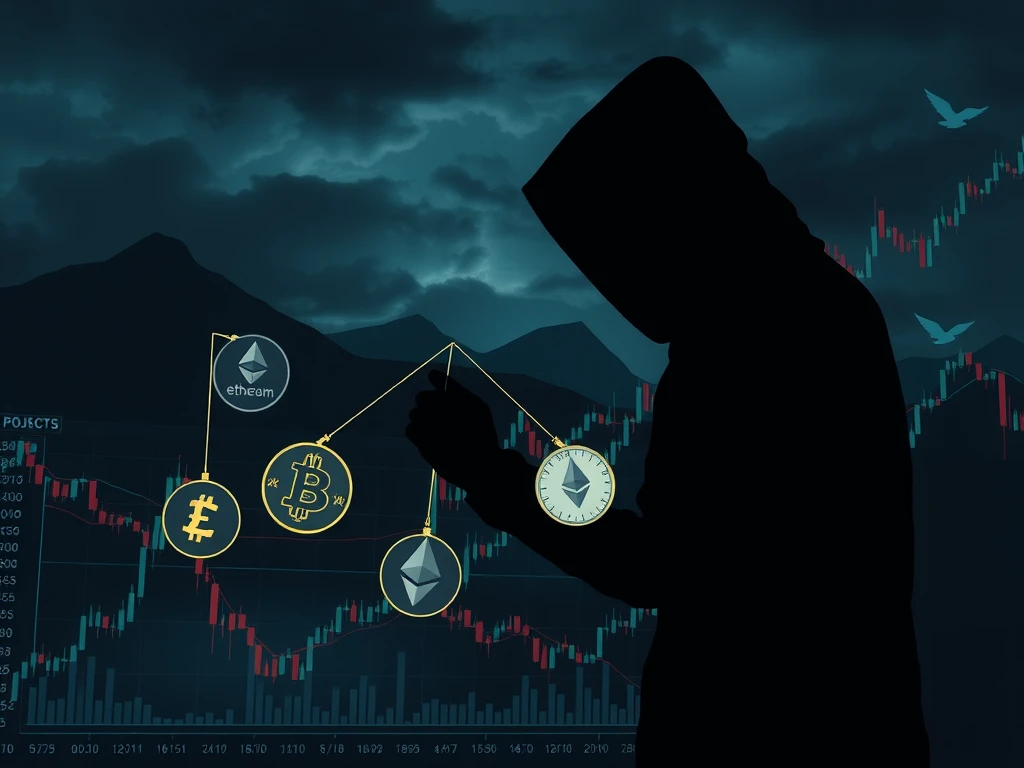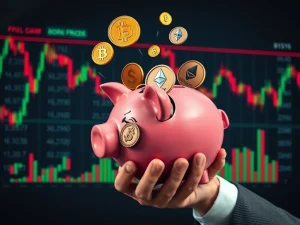Crypto Price Manipulation: Unmasking the Dangerous Market Schemes

Ever seen a cryptocurrency rocket to the moon only to crash back down just as quickly? Often, that isn’t just random market movement. It’s frequently the result of crypto price manipulation. This is the practice where bad actors or coordinated groups artificially inflate or deflate a coin’s price, not through genuine demand, but through deceitful tactics. They create fake volume, spread false hype, or trigger sudden sell-offs to trap unsuspecting traders and profit from their losses. While heavily regulated in traditional finance, this behavior can be harder to track in the less mature crypto space, making it a target for manipulators, especially for coins with lower liquidity and less oversight.
Understanding How Market Manipulation Works
At its core, market manipulation in crypto follows a simple pattern, preying on human emotion and market structure:
- Manipulators generate artificial demand or fear around an asset.
- Other traders react emotionally to the perceived price movement.
- The manipulators execute their trades at the opportune moment.
- The rest of the market participants often face losses.
This cycle exploits the speed and volatility inherent in the digital asset landscape.
Common Tactics: From Pump and Dump to Wash Trading
Scammers employ various tactics to manipulate crypto prices, leveraging market psychology and the fear of missing out (FOMO). Here are some of the most used:
-
Pump and Dump Crypto Schemes: This is a classic. A group quietly buys a low-cap token. They then create massive hype through social media, fake news, or paid influencers, causing the price to skyrocket as retail investors rush in. Once the price is high, the original group sells all their holdings, leading to a rapid price crash. Late buyers are left with worthless tokens.
-
Whale Moves: Large holders (‘whales’) can significantly impact prices with single trades. Their big buy or sell orders can trigger strong reactions from smaller traders who try to follow their perceived insights, amplifying volatility. Whales sometimes use this effect strategically.
-
Wash Trading Crypto: This involves a trader simultaneously buying and selling the same asset to themselves. This creates a false impression of high trading volume and activity, making a token seem more popular or liquid than it is. It’s common on unregulated exchanges and can help tokens climb exchange rankings, misleading investors.
-
Spoofing and Layering: Manipulators place large buy or sell orders without intending to fill them. Spoofing uses a single fake order, while layering uses multiple fake orders at different prices. This creates a false wall of supply or demand, influencing price action. Once other traders react, the fake orders are canceled, and the manipulator profits from the real trades they executed.
Did you know? Studies suggest a significant percentage of volume on unregulated exchanges may be wash trading, creating a distorted view of market activity.
Advanced Manipulation Techniques
Some manipulation is less visible, involving technical methods or privileged information.
-
Bots: High-frequency trading bots can execute complex strategies like front-running, spoofing, or simulating volume faster than humans, gaining an unfair edge.
-
Insider Trading: Trading based on non-public information, such as upcoming exchange listings or partnerships, is illegal in traditional markets and gives an unfair advantage in crypto. It occurs more often than many realize.
-
Oracle Manipulation: Exploiting oracles, which feed external price data to DeFi platforms, can trick smart contracts into incorrect actions, like allowing attackers to drain liquidity pools based on falsified price feeds.
An infamous example occurred in 2020 when a flash loan was used to manipulate an oracle on a DeFi protocol, resulting in significant losses.
Why Manipulation Succeeds: The Power of Emotion
Manipulators thrive because emotion often overrides logic in the fast-paced crypto market. Decisions are frequently made quickly based on gut feelings rather than thorough analysis. Manipulators are skilled at triggering powerful instincts like greed, fear, and FOMO.
-
Greed: The desire to find the ‘next big thing’ makes traders vulnerable to hype-driven schemes like pump and dumps.
-
Fear: Large price drops can cause panic selling, allowing manipulators to buy low.
-
FOMO: Seeing others appear to make quick gains leads traders to ‘ape in’ without research, becoming easy targets.
These emotional responses are faster than rational thought, giving manipulators an advantage without needing to hack systems. They simply hack human behavior.
The Impact of Manipulation on the Crypto Ecosystem
Every instance of crypto price manipulation harms more than just the immediate victims. It erodes trust, which is crucial for the growth of the entire ecosystem. When investors, especially newcomers, lose money to scams or engineered crashes, they become disillusioned and may leave the market permanently. This damage makes the promise of decentralized finance feel less like an innovation and more like a rigged game.
High-profile manipulation cases also attract negative attention from regulators globally, often leading to calls for stricter rules and compliance, which can slow down innovation. Legitimate projects focused on building real value struggle to stand out amidst the noise of scam tokens and misleading promotions.
Ultimately, manipulation doesn’t just hurt individuals; it undermines the credibility and future potential of the entire crypto space.
How to Avoid Crypto Scams and Manipulation
While you can’t control the market, you can protect yourself from common manipulation traps. Here are practical steps to help you avoid crypto scams and manipulation:
-
Do Your Own Research (DYOR): Never trade based solely on social media hype or group chat tips. Investigate the project’s fundamentals, team, technology, and market history.
-
Watch Trading Volume: Be suspicious of sudden, unexplained volume spikes or abnormally low volume for a listed asset. These can indicate wash trading or setup for a pump.
-
Monitor Whale Activity: Use available tools to track large wallet movements. While not always manipulative, significant whale activity can signal potential price shifts.
-
Use Trusted Platforms: Trade on reputable exchanges with strong regulatory compliance and systems in place to detect and prevent illegal trading practices like spoofing and wash trading.
-
Keep Learning: Stay informed about new manipulation tactics and red flags. Continuous education is your best defense in a rapidly evolving market.
Pushing for Safer Crypto Markets
The fight against manipulation is ongoing. The crypto industry is actively working towards creating a more transparent and secure environment. Exchanges are implementing AI-powered surveillance to detect suspicious trading patterns in real-time. DeFi protocols are enhancing on-chain governance and transparency, allowing communities to monitor activity. Regulators are developing frameworks to address market abuse and insider trading. While challenges remain, these efforts represent steps towards a more resilient ecosystem.
Knowledge is your strongest tool against manipulation. If a token’s price surges without a clear reason, pause and investigate. Trust your instincts over overwhelming hype. Staying informed is not just protection; it’s a smart investment in navigating the crypto landscape safely.








